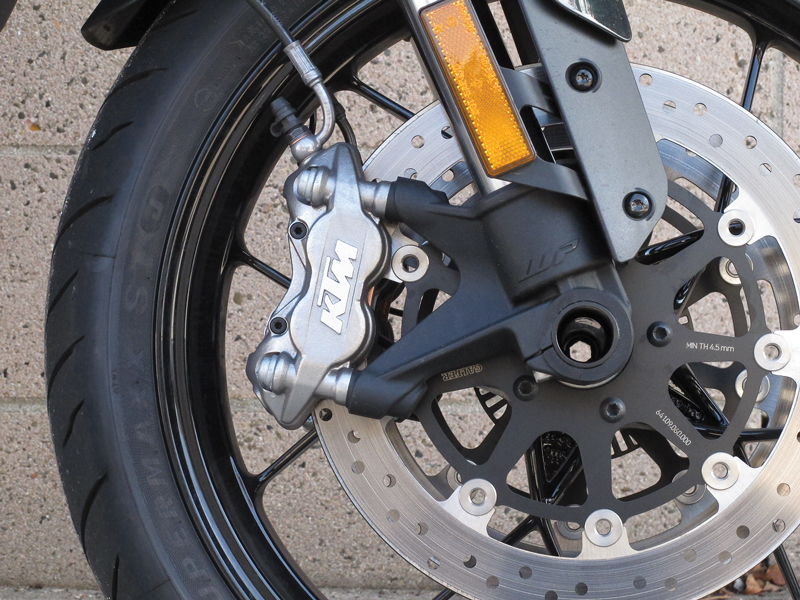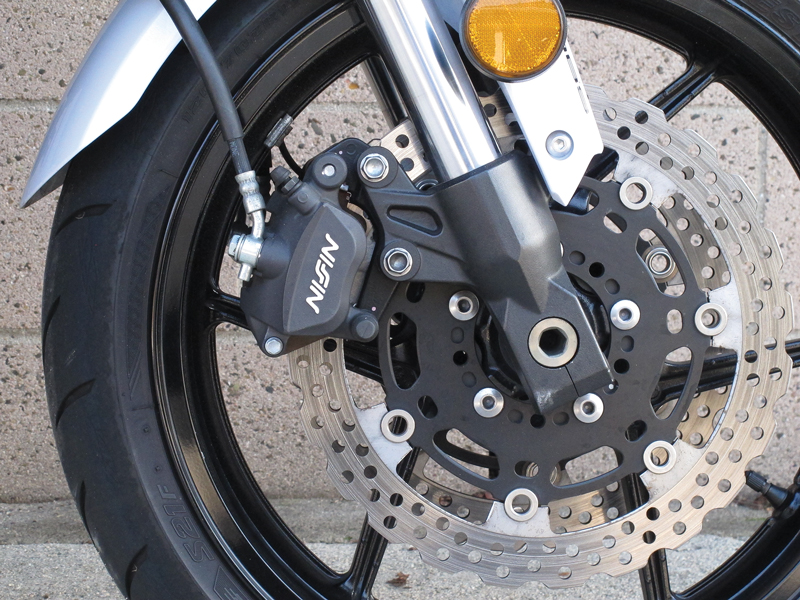

Q: What is the value of radial-mount brake calipers over the normal “old-fashioned” fork mount? All I’ve read is that radial mounting makes it easier to service the brakes on race bikes.
Tom Sanor, Roswell, Georgia
A: The difference between radial- and axial-mount, or “old fashioned” brakes as you call them, boils down to how they’re mounted to the fork. Radial calipers are secured via bolts that run parallel to the discs, while axial-mount brakes are held in place with bolts that are perpendicular to the discs, parallel to the axle.
That’s a seemingly trivial difference, but radial mounting yields some important benefits. For starters, radial-mount calipers provide better caliper-to-disc alignment since the caliper body is centered over the disc using locating dowels rather than sliding pins as on an axial setup. Radial calipers are also more rigid since the caliper is secured at both ends rather than at just one end as is common on axial calipers. That improved alignment and rigidity can provide better bite, more stopping power and improved feel under aggressive braking, which is especially important stuff to roadracers.
As you surmised, radial-mount technology was born on the track and trickled down to the street, and as you mentioned mounting calipers radially makes it easier to change disc sizes since all you need to do is swap out the caliper spacers to accommodate larger or smaller discs. MotoGP racers may run 320mm or 340mm discs depending on the track, conditions and rider, and swapping out those pie plates wouldn’t be nearly as quick and easy with axial-mount calipers.







